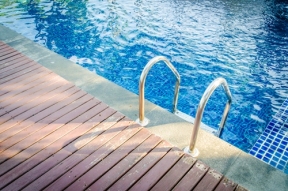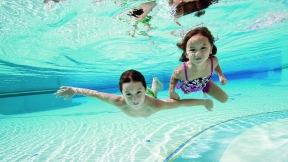
Now that Memorial Day has passed, the start of summer swimming season is upon us. But do you know the dirt on your community swimming spots? A recent study by the U.S. Centers for Disease Control and Prevention (CDC) found 80 percent of public swimming pools in this country have some sort of health or safety violation. Scary? Yes. But luckily, there are several steps you can take to make pool time safe and clean for everyone, Forbes reports.
For the study, CDC researchers looked at pool inspection data from Arizona, California, New York and Texas in 2013, including a little more than 84,000 routine inspections of almost 49,000 public pools, hot tubs, water playgrounds and other aquatic venues. According to recent surveys, one in five people in the U.S. admitted to peeing in a pool, and 70 percent of people said they don’t shower before entering a pool. This can lead to a wide array of health risks the CDC calls recreational water illnesses, or RWIs. These illnesses include diarrheal diseases, norovirus and various eye, skin and ear infections. What’s more, the chlorine used in pools to combat dangerous bacteria may also irritate the skin, nose, throat and lungs if used in too-high concentrations. Other potential threats from swimming pools include drowning, injuries from too many toys or equipment in the water and potential electric shocks from equipment located too near the pool.

To avoid these swimming pool–related dangers, experts suggest ensuing that the water is clear enough to see the bottom, pool edges and equipment aren’t slimy and there’s a qualified lifeguard on duty. Additionally, ask pool staff for their latest pool inspection results, or test the waters yourself with a water pH strip, which are sold in many stores. Also, skip swimming if you have any open wounds or active infections; try not to drink pool water while you are swimming; and, please, don’t pee in the pool.








